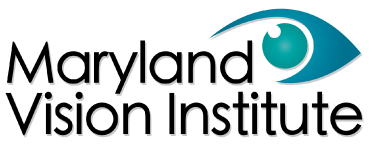Incorporating Technological Advances into Cataract Surgery at MVI
Technology drives innovation, which has never been more evident than today with the evolution of Laser Cataract Surgery. Traditional cataract surgery produces excellent outcomes. However, until recently the major steps of cataract surgery were done using manual techniques. Today, we are able to offer our patients a laser method of cataract surgery, which is setting a new standard for precision in cataract surgery.
Our LenSx laser is the first of its kind in central Maryland and is used for cataract surgery patients who choose astigmatism-correcting cataract surgery or surgery with a premium lens (such as the Symfony, Crystalens, ReSTOR or Tecnis Multifocal lens). A bladeless, computer-controlled laser surgery is planned and performed to exacting individualized specification not attainable with other traditional surgical methods. Laser cataract surgery is designed to improve the precision and accuracy of your cataract surgery.
Our LenSx Laser Automates the Most Challenges Steps of Surgery
The LenSx laser used at our practice provides our patients with computer-controlled precision for their cataract surgery. It automates some of the most challenging steps of refractive cataract surgery. This femtosecond laser replaces the traditional hand-held blade to optimize all incisions for enhanced, reproducible surgical results.
In traditional non-laser basic cataract surgery, the surgeon makes incisions and removes the cataract using surgical instruments and blades. However, during laser cataract surgery, several of the most critical steps of the surgical process are performed using an image-guided femtosecond laser.
Maryland Vision Institute is pleased to be among the first practices in central Maryland to offer patients the benefits of laser cataract surgery. We believe in providing our patients with the latest technology for vision correction and are now using the latest evolution of femtosecond laser technology in cataract surgery.
Laser Cataract Surgery Shortens Patients’ Healing Time
Laser cataract surgery is a state-of-the-art technology that improves the precision and shortens the healing time for a patient undergoing cataract surgery. Traditionally, cataract surgery involves using blades to create the corneal incisions; using a needle and small forceps to create the opening to the cataract; and using only ultrasound energy to break up the cataract into smaller pieces for safe removal. In contrast, femtosecond-assisted cataract surgery uses laser energy to create all of the corneal incisions; laser energy to create a perfect circular opening to the cataract; and laser energy to break up the cataract into even smaller pieces.
We feel that this laser technology is superior to “standard” cataract surgery because no human can match the precision of a laser! Laser-assisted cataract surgery is also much gentler on the corneal endothelium (i.e. the “water pumps” of the cornea) which translates into faster patient recovery times. Lastly, astigmatism reduction is more precise using the laser compared to traditional methods using blades.
Wait a second, I thought all surgeons used a laser for cataract surgery?
Contrary to popular belief, most cataract surgeons do not have access or experience with laser-assisted cataract surgery. We were the very first surgeons to perform laser-assisted cataract surgery in the area including Hagerstown, Chambersburg, Frederick, and Cumberland. Because of our dedication to this disruptive technology, we are also the most experienced laser cataract surgeons in the area and are in the top 5th percentile laser cataract surgeons in the nation in volume. We brought this technology to the area because of our ongoing dedication of providing the most advanced technology of any practice in the nation.
Advancing The Art of Cataract Surgery With Breakthrough Technology
We utilize Alcon’s LenSx femtosecond laser which is the industry leader for this technology. This amazing machine allows us to create very specific corneal incisions, limbal-relaxing incisions for astigmatism reduction, perfect circular openings to the cataract, and divides the cataract into many little pieces for atraumatic removal.
We also use Alcon’s Centurion Vision System as our phacoemulsification platform. This is the latest generation phacoemulsification technology that optimizes the fluidics during the removal stage of cataract surgery. In addition, ultrasound times are minimized compared to older phacoemulsification machines. Using the Centurion with the LenSx femtosecond laser means you are getting the best that today’s technology has to offer for cataract surgery.
We also use Alcon’s ORA System with VerifEye+. This device is an example of an intraoperative aberrometer. The purpose of this device is to calculate the exact intraocular lens power that your eye needs during the time of the surgery. This device is superior to other methods of intraocular lens power calculation which are based more on theoretical or regression formulas. The ORA system with VerfiEye+ is even more useful for patients receiving multifocal and toric intraocular lenses. These premium lenses require the most precision in terms of lens power determination, and the ORA helps you achieve that goal!
We also use Alcon’s Verion Image Guided System. This device provides a real-time heads up display over the actual eye during surgery. This technology helps guide the surgeon during key parts of the surgery and also increases the precision of toric intraocular lens alignment. This heads-up display is similar to the technology that fighter pilots use to control their intricate jets!



